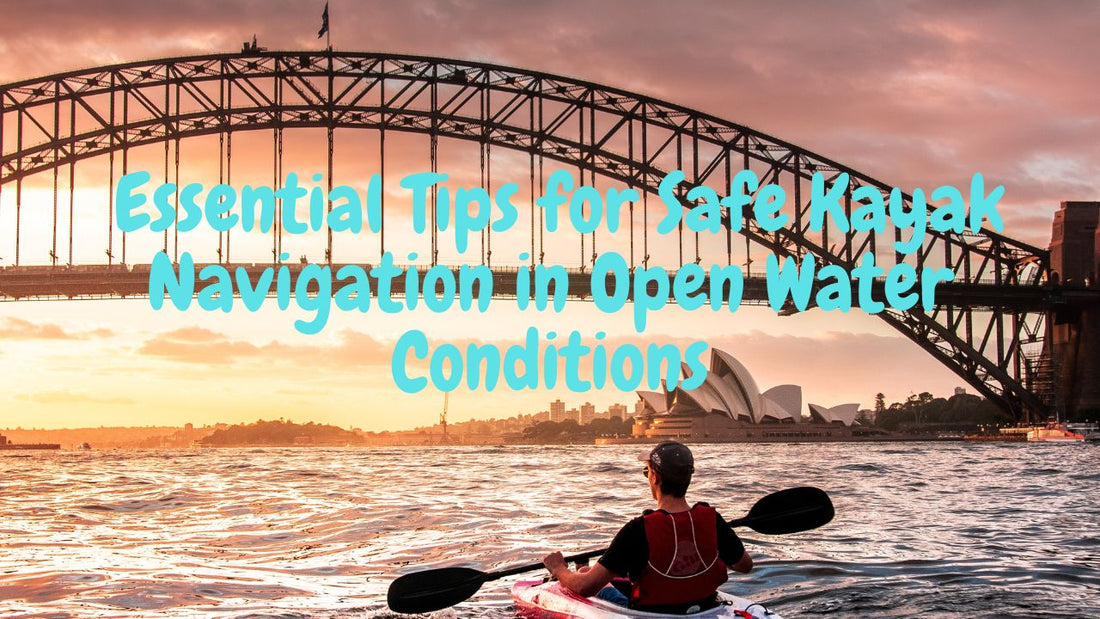
Kayaking and canoeing in open water conditions, such as coastal areas or large lakes, can be an exhilarating adventure. However, it's crucial to prioritize safety and be well-prepared before setting out on your journey. In this informative article, we will provide you with essential tips and specialized information to enhance your understanding of kayak navigation and ensure a safe and enjoyable experience for beginners and seasoned paddlers alike.
-
Plan Your Route: A well-planned route is the foundation of a successful kayaking trip. Research the area, study nautical charts or use navigation apps to identify landmarks, entry and exit points, and potential hazards. Take note of local regulations, restricted areas, and any designated kayak routes. This preparation will help you avoid surprises and navigate confidently.
-
Understanding Weather Conditions: Keeping a close eye on weather conditions is crucial for a safe kayaking expedition. Check the forecast before you depart and be aware of any changes that may occur while you're on the water. Strong winds, thunderstorms, or fog can pose challenges and increase risks. Always prioritize your safety and delay or reschedule your trip if conditions are unfavorable.
-
Utilize Navigational Aids: Navigational aids, such as buoys, beacons, and markers, play a vital role in guiding your way. Learn the meaning of different navigational symbols and colors to understand the information they convey. These aids are strategically placed to ensure safe navigation, and by utilizing them effectively, you can stay on course and avoid potential hazards.
-
Situational Awareness: Maintaining situational awareness is key to safe kayaking. Continuously observe your surroundings, keeping an eye on other boats, vessels, and watercraft in the area. Stay alert for potential obstacles like rocks, sandbars, submerged logs, or shallow areas. Monitoring the movement of the water will help you anticipate changes in conditions and adjust your course accordingly.
-
Navigational Tools: Carry essential navigational tools such as a compass or a GPS device. These tools assist in maintaining a consistent heading and tracking your progress. Familiarize yourself with their use before your trip and ensure they are in good working condition. Additionally, consider carrying a waterproof map or a chart as a backup.
-
Safety Equipment: Safety should always be a priority. Wear a personal flotation device (PFD) at all times while on the water, ensuring it is properly fitted. Dress appropriately, considering the water temperature and potential weather changes. Carry essential safety equipment such as a whistle, signaling devices, a first aid kit, a bilge pump, and a spare paddle. These items will prove invaluable in case of emergencies.
-
Paddling with Others: Whenever possible, paddle with a buddy or in a group. Kayaking with others enhances safety and provides assistance in case of unexpected circumstances. Stay within visual and communication range of each other, and establish a plan for regrouping if someone gets separated. Enjoy the camaraderie and share the joy of the experience together.
-
Understanding Currents and Tides: In coastal areas, it is crucial to be mindful of the effects of tidal currents on your paddling. Learn to read tide tables or use tide apps to understand the tidal patterns in your area. Plan your paddling times to take advantage of favorable tides and avoid strong opposing currents. This knowledge will help you conserve energy and navigate efficiently.
-
Communication and Emergency Preparedness: Carry a waterproof communication device such as a VHF radio or a mobile phone in a waterproof case. This allows you to reach out for assistance if needed. Inform someone on land about your trip plans, including your route, expected return time, and emergency contact information. Be prepared for unexpected
-
Communication and Emergency Preparedness (continued): Be prepared for unexpected situations by acquiring basic first aid knowledge and carrying a well-stocked first aid kit. Learn basic rescue techniques, such as how to perform a T-rescue or assist a capsized paddler. It's also essential to have a thorough understanding of self-rescue techniques, including how to re-enter your kayak from the water and perform a paddle float rescue.
-
Developing Proper Paddling Technique: To maximize control and minimize fatigue, it's crucial to develop and practice proper paddling techniques. Learn the fundamental strokes, such as forward stroke, reverse stroke, sweep stroke, and draw stroke. Practice efficient bracing techniques, such as low braces and high braces, to maintain stability in varying conditions. Joining a kayaking or canoeing class or seeking guidance from experienced paddlers can significantly enhance your skills.
-
Environmental Considerations: As responsible kayakers, it's important to be mindful of the environment. Respect the natural surroundings and wildlife by keeping a safe distance. Avoid disturbing nesting areas or sensitive habitats. Dispose of any waste properly and leave no trace behind. By being conscientious stewards of the environment, we can ensure that future generations can enjoy these natural wonders as well.
Kayaking in open water conditions can provide a thrilling and rewarding experience. By following these essential tips, you can enhance your safety and enjoyment on the water. Remember to plan your route, stay informed about weather conditions, utilize navigational aids, and maintain situational awareness. Carry the necessary safety equipment, paddle with others whenever possible, and be knowledgeable about currents and tides. Develop proper paddling techniques and be prepared for emergencies. With these guidelines in mind, you can embark on your kayaking adventures with confidence, exploring the beauty of coastal areas and large lakes while keeping safety as your utmost priority. Happy paddling!
